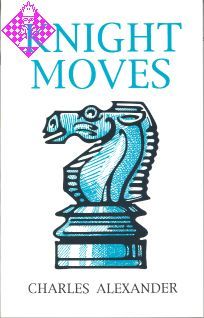Article Number
LEALEKM
Author
Knight Moves
82 pages, paperback, Chess Enterprises, 1. edition 1998
Discontinued
Knight moves are the most difficult to visualize on the chess board. In the endgame it is frequently necessary to determine whether a knight can reach a certain square to intercept a passed pawn or protect one of your own pieces or pawns. In the time pressure of many tournament endgames, it is even more difficult to concentrate and feel confident that you have correctly calculated the possible path of the knight and the number of moves necessary in the variation. This often leads a player to repeat the sequence in the mind a number of times to feel certain that his projected moves will indeed accomplish the objective. Mr. Alexander has developed a set of tools which make it very precise and quick to determine the required number of moves, and whether or not a sequence of knight moves will achieve a goal. The author has developed a wonderful set of graphs which visualize the possibilities of moving a knight to a desired goal. Many players will find this technique to be invaluable in winning endgames involving the knight, or even combinations in the course of the middlegame.
| EAN | 0945470762 |
|---|---|
| Weight | 130 g |
| Manufacturer | Chess Enterprises |
| Width | 13.7 cm |
| Height | 21.6 cm |
| Medium | Book |
| Year of Publication | 1998 |
| Author | Charles Alexander |
| Language | English |
| Edition | 1 |
| ISBN-10 | 0945470762 |
| Pages | 82 |
| Binding | paperback |
06 INTRODUCTION
08 CHAPTER ONE: THE KNIGHT'S POTENTIAL FOR MOVEMENT IN A SPECIFIC NUMBER OF MOVES
08 The Knight's Potential In One Move
10 The Knight's Potential In Two Moves
14 The Knight's Potential In Three Moves
16 The Knight's Potential In Four Moves
18 The Knight's Potential In Five Moves
19 The Knight's Potential In Six Moves
20 CHAPTER TWO: THE KNIGHT'S POTENTIAL FOR MOVEMENT IN THE FEWEST MOVES POSSIBLE
20 The Exclusive Move Patterns
24 The Composite Move Pattern
31 CHAPTER THREE: VISUALIZING THE KNIGHT'S POTENTIAL FOR MOVEMENT
31 A User-Friendly Model
31 Description Of The Knight's Potential For Movement
34 Distinguishing Between Opposite-Color Squares
36 Distinguishing Between The Same-Color Squares
38 Simplified Rules Of The Knight's Movement
41 CHAPTER FOUR: THE VISUALIZATION TECHNIQUE IN PRACTICE
42 There Are Only Two Cases In Which Some Squares Are Five Moves Away
42 /. The Knight Is On An Edge Square
42 II. The Knight Is 'On Or Near A Corner Square'
46 The Fourth Diagonal Square Rules
47 Introduction To Alexander's Technique
48 Alexander's Technique
50 Application Examples Of Alexander's Technique
56 FINAL COMMENTS
58 PRACTICE EXERCISES AND VERIFICATION OF ALEXANDER'S TECHNIQUE
70 ANSWER KEY / GENERAL REFERENCE
81 INDEX
08 CHAPTER ONE: THE KNIGHT'S POTENTIAL FOR MOVEMENT IN A SPECIFIC NUMBER OF MOVES
08 The Knight's Potential In One Move
10 The Knight's Potential In Two Moves
14 The Knight's Potential In Three Moves
16 The Knight's Potential In Four Moves
18 The Knight's Potential In Five Moves
19 The Knight's Potential In Six Moves
20 CHAPTER TWO: THE KNIGHT'S POTENTIAL FOR MOVEMENT IN THE FEWEST MOVES POSSIBLE
20 The Exclusive Move Patterns
24 The Composite Move Pattern
31 CHAPTER THREE: VISUALIZING THE KNIGHT'S POTENTIAL FOR MOVEMENT
31 A User-Friendly Model
31 Description Of The Knight's Potential For Movement
34 Distinguishing Between Opposite-Color Squares
36 Distinguishing Between The Same-Color Squares
38 Simplified Rules Of The Knight's Movement
41 CHAPTER FOUR: THE VISUALIZATION TECHNIQUE IN PRACTICE
42 There Are Only Two Cases In Which Some Squares Are Five Moves Away
42 /. The Knight Is On An Edge Square
42 II. The Knight Is 'On Or Near A Corner Square'
46 The Fourth Diagonal Square Rules
47 Introduction To Alexander's Technique
48 Alexander's Technique
50 Application Examples Of Alexander's Technique
56 FINAL COMMENTS
58 PRACTICE EXERCISES AND VERIFICATION OF ALEXANDER'S TECHNIQUE
70 ANSWER KEY / GENERAL REFERENCE
81 INDEX


